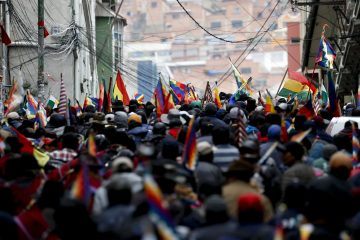 Erica Chenoweth, Sirianne Dahlum, Sooyeon Kang, Zoe Marks, Christopher Wiley Shay and Tore Wig in The Washington Post:
Erica Chenoweth, Sirianne Dahlum, Sooyeon Kang, Zoe Marks, Christopher Wiley Shay and Tore Wig in The Washington Post:
Around the globe, mass nonviolent protests are demanding that national leaders step down. Evo Morales, Bolivia’s three-term leftist president, is the latest casualty of mass demonstrations, after being abandoned by the military. Beyond Bolivia, people are rising up against their governments in places as varied as Chile, Lebanon, Ecuador, Argentina, Hong Kong, Iraq and Britain. This follows remarkable protests in Sudan and Algeria in the spring, in which protest movements effectively toppled entrenched dictators, and in Puerto Rico, where a mass movement deposed an unpopular governor. Beyond Puerto Rico, the United States has also hosted a steady stream of protest since January 2017 against the Trump administration and its policies.
We may be in the midst of the largest wave of nonviolent mass movements in world history. Social media has made mass protests easier to organize — but, perhaps paradoxically, harder to resolve. As these movements escalate more rapidly around the world, some common challenges may make it harder for them to succeed beyond winning short-term concessions. That’s especially true when they are leaderless or unorganized. Let’s look at why.
1. Disciplined nonviolence is contending with ‘violent flanks.’
While most of these are peaceful, nonviolent protests, some have “violent flanks.” Some research suggests that intermittent street fighting and violent distractions — like molotov cocktails or rock-throwing — can make such movements harder for people and the government to ignore, keeping pressure on elites to resolve the crisis, so long as the movement as a whole is well-organized.
More here.
